Eta Car Models
Collaborators: Art Code, Jennifer Hoffman, Mike Wolff
Eta Car is a massive star in the class of Luminous Blue Variables.
It had an outburst about 150 years ago, and the Hubble
Space Telescope images show the results of this outburst in
the expanding bubbles of gas and dust.
We are planning to model the geometry and polarization of this
source. Some fundamental quantities we wish to determine are:
total mass of the emitting gas and dust in the nebula surrounding
the star, and the latitudinal distribution of the dust. The total
mass is interesting because it says something about the kinetic
energy of the eruption which, based on the current estimates,
is about equal to the bolometric luminosity of the star. The latitudinal
distribution of mass will tell us something about the nature of
the initial mass loss mechanism that caused the outburst.
The following are some simple geometries for Eta Car nebula:
a hollow shell with a shape (cos(theta))^b, that is cosine raised
to an exponent b. On the left is an edge-on case so you can see
the shape of the envelope. In the middle is the inclination that
best matches Eta Ear for that envelope shape. I took envelope
parameters from Davidson and Humphreys's review article (ARAA,
35, 1, 1997). Max size of lobes is 19,550 AU. The optical depth
is constant with latitude for this model. We're using standard
interstellar dust as a starting point for the dust scattering
properties. Optical depth through all the envelopes is about 1.8
at V. Total envelope mass depends on shape but varies between
0.7 and 1.8 solar masses (Davidson estimates about 2). The disk
mass is 0.1 solar mass. To light it up, the density has to be
constant, that is, not fall off as power law; otherwise it shadows
itself due to large optical depths near the star.
|
b=0.5 |
env. mass=1.8 |
polarization map... |
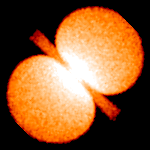 |
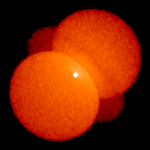 |
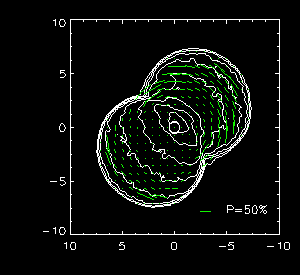 |
|
i=90 |
i=60 |
|
|
b=0.75 |
env. mass = 1.4 |
|
 |
 |
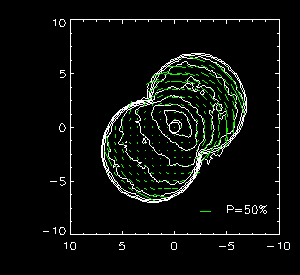 |
|
i=90 |
i=53 |
|
|
b=1 |
env. mass = 1.2 |
|
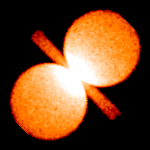 |
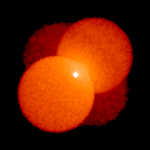 |
 |
|
i=90 |
i=46 |
|
|
b=1.5 |
env. mass = 0.9 |
|
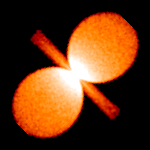 |
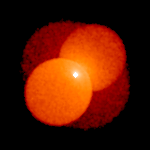 |
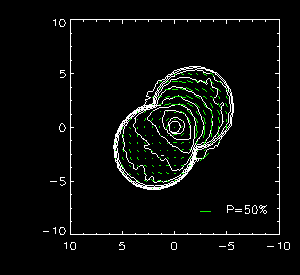 |
|
i=90 |
i=37 |
|
|
b=2 |
env. mass = 0.7 |
|
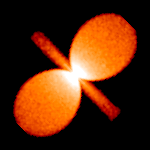 |
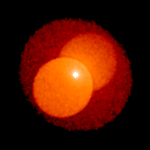 |
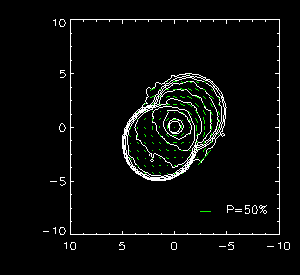 |
|
i=90 |
i=26 |
|
 return to Barbara
Whitney's homepage
return to Barbara
Whitney's homepage

















